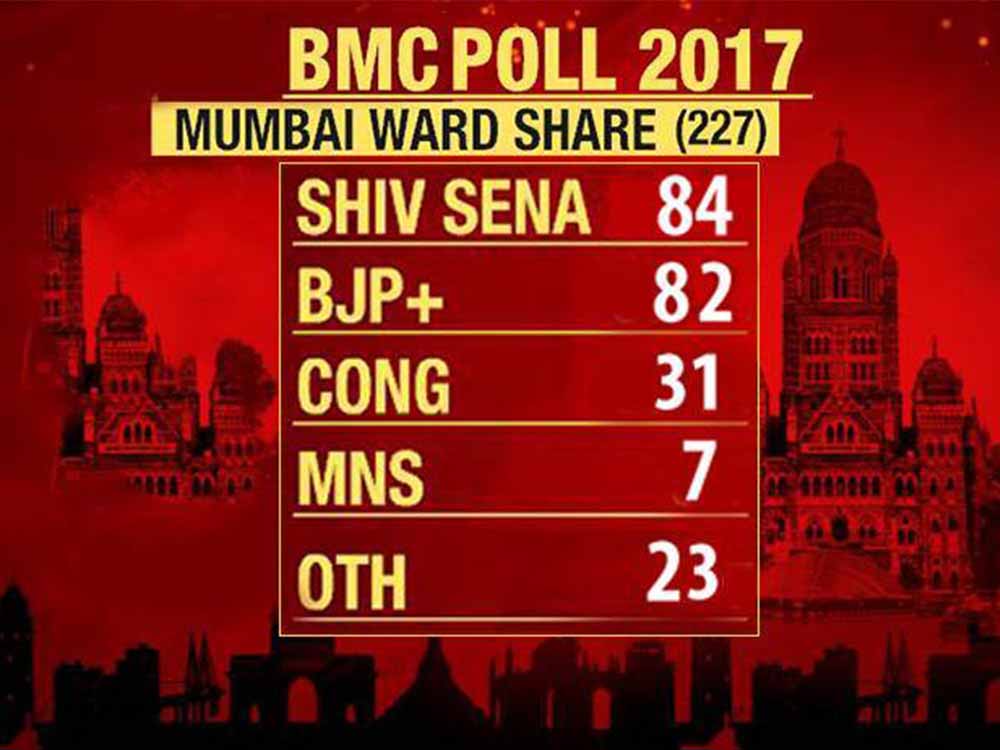BMC Election 2017 – A Crucial Civic Poll in Mumbai
The Brihanmumbai Municipal Corporation (BMC) election of 2017 was a significant electoral event in Mumbai, India. As the country’s richest municipal corporation and one of the largest local governing bodies in the world, the BMC election held immense importance for the city’s residents, political parties, and the broader state of Maharashtra.
The Context and Significance
The BMC is responsible for governing Mumbai, the financial capital of India, and it controls substantial resources and infrastructure. The 2017 election was held against the backdrop of several pressing issues, including urban development, infrastructure upgrades, housing, and the city’s overall livability.
Mumbai’s civic governance had traditionally been controlled by the Shiv Sena-Bharatiya Janata Party (BJP) alliance. However, in the lead-up to the 2017 election, there were signs of a possible shift in political dynamics, with the Maharashtra Navnirman Sena (MNS) and the Aam Aadmi Party (AAP) also vying for influence.
Key Contenders and Campaign Issues
The BMC election featured several major political parties and a multitude of independent candidates. The key contenders included:
- Shiv Sena: A regional political party with a strong presence in Mumbai, the Shiv Sena had traditionally held sway in the BMC. It was led by Uddhav Thackeray, who also served as the Chief Minister of Maharashtra during this period.
- Bharatiya Janata Party (BJP): The national party in alliance with the Shiv Sena, the BJP sought to expand its influence in the BMC. The party was led by Devendra Fadnavis, the Chief Minister of Maharashtra.
- Indian National Congress: The Congress party aimed to regain lost ground in Mumbai’s civic governance. Sanjay Nirupam led the party’s campaign.
- Maharashtra Navnirman Sena (MNS): Led by Raj Thackeray, the MNS aimed to challenge the traditional dominance of the Shiv Sena in Mumbai’s politics.
- Aam Aadmi Party (AAP): The AAP, known for its anti-corruption stance, contested the BMC election with the goal of offering an alternative to the established parties.
Campaign issues revolved around urban infrastructure, housing, transportation, sanitation, and the quality of life in Mumbai. The state of the city’s roads, drainage system, and housing for its residents were prominent topics of debate.
The Shiv Sena’s Victory and Power Dynamics
The BMC election results, declared in February 2017, saw the Shiv Sena emerge as the largest party in the corporation. The party secured 84 out of 227 seats, retaining its dominant position in the BMC.
However, the election also revealed the changing political landscape in Mumbai. The BJP made significant gains, securing 82 seats, narrowing the gap with the Shiv Sena. The Congress party won 31 seats, and the MNS, which had been a formidable contender, was reduced to just 7 seats. The AAP made a modest debut in BMC politics, securing 3 seats.
The outcome resulted in a complex power dynamic in the BMC, with neither the Shiv Sena nor the BJP having a clear majority. Both parties engaged in post-election negotiations and political maneuvering to secure the support of independent and smaller party councillors.
Implications and Governance Challenges
The BMC election of 2017 had important implications for Mumbai’s civic governance and the broader political landscape of Maharashtra. While the Shiv Sena retained its grip on power in the BMC, the BJP’s significant gains signaled its growing influence in the city.
The election also highlighted the need for effective governance and infrastructure development in Mumbai, a city known for its rapid growth and challenges. Issues such as traffic congestion, flooding during monsoons, and housing for the economically disadvantaged remained pressing concerns.
In retrospect, the BMC election of 2017 was a crucial civic poll that reflected the evolving political dynamics of Mumbai and the state of Maharashtra. It showcased the competitive nature of urban governance and the complex alliances and negotiations that shape local politics. The challenges facing Mumbai’s civic authorities continued to be at the forefront of public discourse and policy-making in the years that followed.











